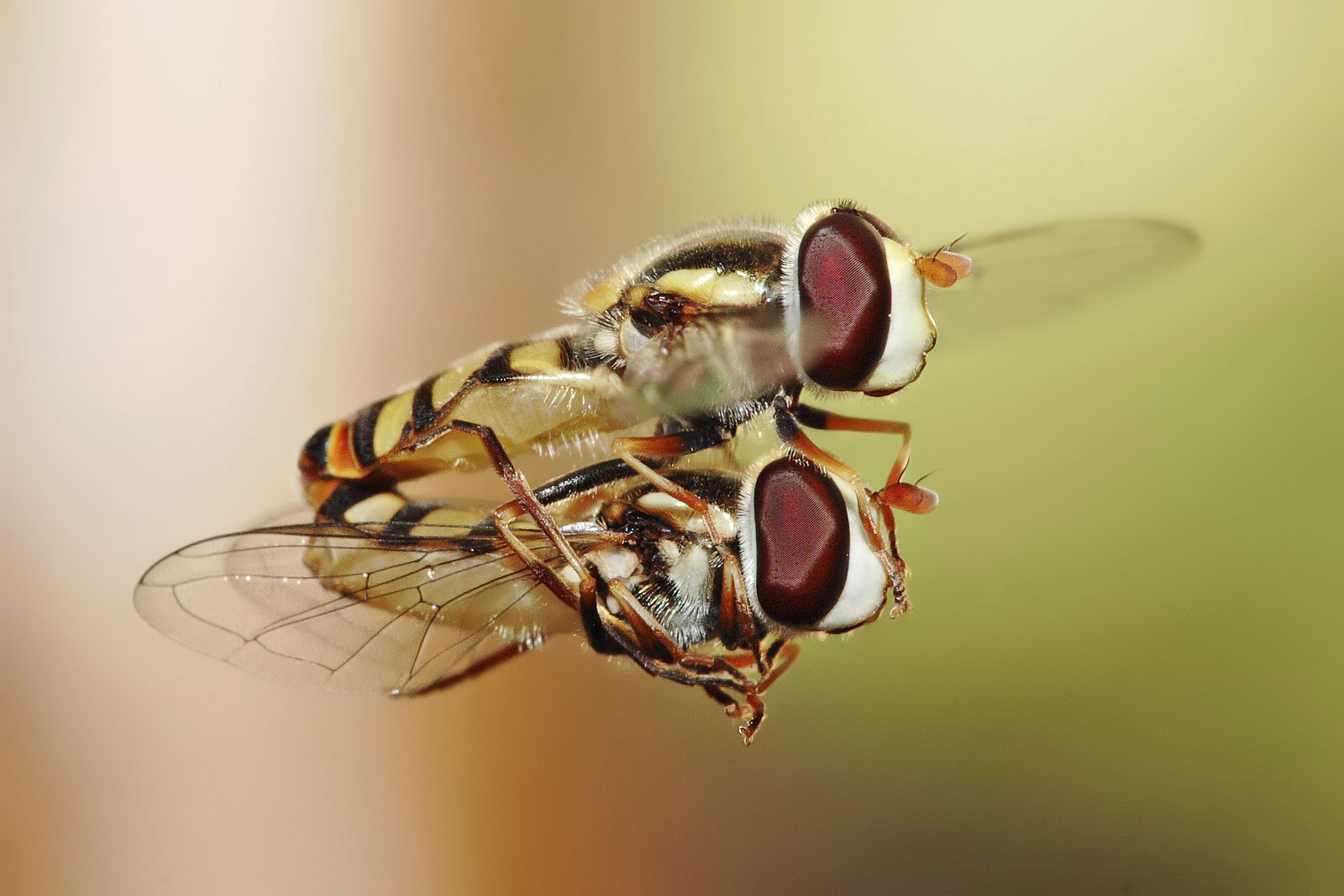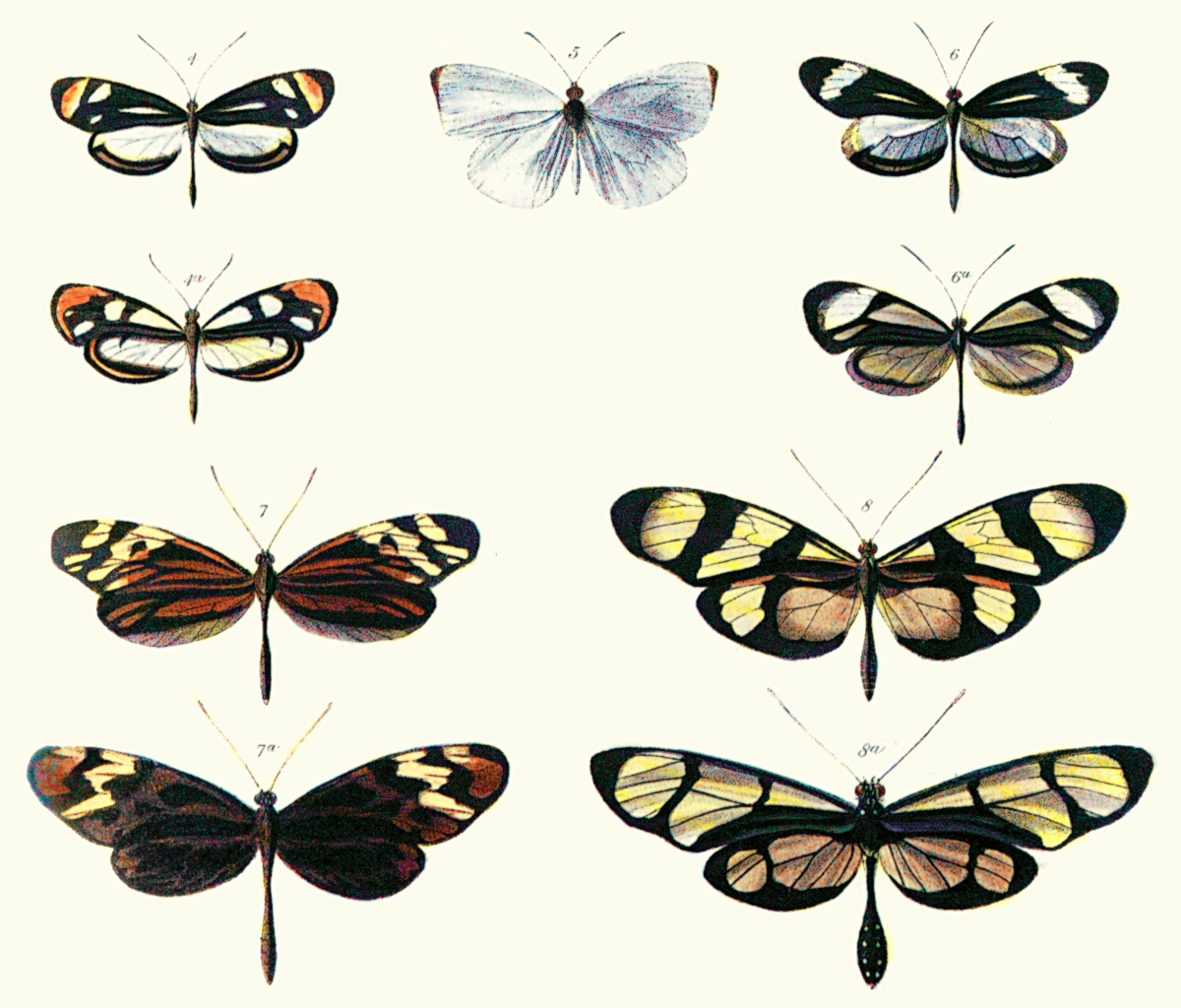|
Cerioidini
Cerioidini is a widespread tribe of around 222 species of hoverfly. ''Cerioidini'' are mistaken for wasps for which they are effective mimic MIMIC, known in capitalized form only, is a former simulation computer language developed 1964 by H. E. Petersen, F. J. Sansom and L. M. Warshawsky of Systems Engineering Group within the Air Force Materiel Command at the Wright-Patterson AFB in .... ''Cerioidini'' have antennae with a terminal style and have somewhat elongate and basally constricted abdomens, only slightly in '' Ceriana'', but pronounced in most '' Sphiximorpha''; and '' Polybiomyia'', and extremely in '' Monoceromyia''. Larvae live mostly within tree sap associated with tree wounds or putrefying pockets of water in tree cavities. end of template cite journal Description This family is distinguished by anatomy and coloration that has evolved to be wasp mimics. The antennae are long and thin with a terminal arista (see gallery) suggestive of wasp antennae that a ... [...More Info...] [...Related Items...] OR: [Wikipedia] [Google] [Baidu] |
Polybiomyia
''Polybiomyia'' is a genus of hoverfly.Ricarte, A., Marcos-garcía, M. A., Rotheray, G. E. & Hancock, E. G. (2007). The Early Stages and Breeding Sites of 10 Cerioidini Flies (Diptera: Syrphidae). Annals of the Entomological Society of America 100(6):914-924 Polybiomyia_bellardii_1.jpg, ''Polybiomyia bellardii'' Polybiomyia_lyncharribalzagai_1.png, ''Polybiomyia lyncharribalzagai'' Polybiomyia_schnablei_1.jpg, ''Polybiomyia schnablei'' Frontal prominence of Ceriana.jpg, Frontal prominence Cerioidini_antennae.png, antennae Systematics Species include: * '' Polybiomyia ablepta '' (Riek, 1954) * '' Polybiomyia arietis ''(Loew, 1853) * '' Polybiomyia bassleri '' (Curran, 1941) *'' Polybiomyia bellardii'' (Shannon, 1925) * ''Polybiomyia bequaerti '' (Curran, 1938) * '' Polybiomyia bolivari '' (Thompson & Wyatt, 2015) * ''Polybiomyia divisa '' (Walker, 1857) *''Polybiomyia engelhardti'' (Shannon, 1925) *''Polybiomyia lyncharribalzagai'' (Shannon, 1 ... [...More Info...] [...Related Items...] OR: [Wikipedia] [Google] [Baidu] |
Ceriana (fly)
''Ceriana'' is a genus of hoverfly. All species are wasp mimics. Ceriana_conopsoides_1.jpg, Ceriana_conopsoides Frontal prominence of Ceriana.jpg, Frontal prominence Cerioidini_antennae.png, antennae Ceriana_ornata_1.jpg, Ceriana_ornata Ceriana_tridens_1.jpg, Ceriana_ornata Ceriana ancoralis 1.png, Ceriana ancoralis Hoverfly, Ceriana vespiformis (39839065002).jpg, Ceriana vespiformis Syrphidae (Ceriana) wing veins.svg, Ceriana wing veins Systematics Species include: *'' C. abbreviata'' Loew, 1864 *'' C. alboseta '' (Ferguson, 1926) *'' C. ancoralis'' (Coquillett, 1902) *'' C. annulifera '' (Walker , 1861) *'' C.antipoda '' ( Bigot 1860) *'' C.apicalis '' (Ferguson 1926) *'' C.aurata '' (Curran 1927) *'' C.australis '' (Macquart 1850) *'' C.brevis '' ( Brunetti , 1923) *'' C. brunettii'' (Shannon, 1927) *'' C. brunettii '' ( Shannon 1927) *'' C. brunnea '' ( Hull , 1944) *'' C. cacica '' (Walker , 1860) *'' C. caesarea'' (Stackelberg, 1928) *'' C. caucasica'' ... [...More Info...] [...Related Items...] OR: [Wikipedia] [Google] [Baidu] |
Sphiximorpha
''Sphiximorpha'' is a genus of hoverfly.Ricarte, A., Marcos-garcía, M. A., Rotheray, G. E. & Hancock, E. G. (2007). The Early Stages and Breeding Sites of 10 Cerioidini Flies (Diptera: Syrphidae). Annals of the Entomological Society of America 100(6):914-924 Systematics Species include: * '' Sphiximorpha africana '' (Hull, 1944) * '' Sphiximorpha alaplicata '' (Hardy, 1945) * '' Sphiximorpha barbiger '' ( Loew, 1853) * '' Sphiximorpha barbipes '' ( Loew, 1853) * '' Sphiximorpha bezzii '' (Hervé-Bazin, 1913) * '' Sphiximorpha bigotii '' ( Williston, 1888) * '' Sphiximorpha bigotii '' ( Williston, 1888) * '' Sphiximorpha boliviana '' (Kertész, 1903) * '' Sphiximorpha brauerii '' ( Williston, 1888) * '' Sphiximorpha brevilumbata (Yang & Cheng, 1998) * '' Sphiximorpha breviscapa '' (Saunders, 1845) * '' Sphiximorpha bulbosa '' (Meijere, 1924) * '' Sphiximorpha cylindrica '' ( Curran, 1921) * '' Sphiximorpha decorata '' ( Brunetti, 1923) ... [...More Info...] [...Related Items...] OR: [Wikipedia] [Google] [Baidu] |
Monoceromyia
''Monoceromyia'' is a genus of hoverfly. Species in the genus are found in the Afrotropical, Australasian, Neotropical and Oriental regions. They are mimics of wasps and the genus is distinguished by the metapleura being widely separate behind the hind coxae. The elongated frontal base of the antenna is at least as long as the basal segment of the antenna and the second abdominal tergum is longer than wide and constricted. Systematics Species include: * '' Monoceromyia afra ''(Wiedemann 1830) * '' Monoceromyia ammophilina ''(Speiser, 1910) * '' Monoceromyia annulata ''(Kertész, 1913) * '' Monoceromyia atacta ''(Riek, 1954) * '' Monoceromyia bicolor ''(Kertesz 1902) *''Monoceromyia brunnecorporalis'' Yang & Cheng, 1999 *'' Monoceromyia bubulici'' * '' Monoceromyia cacica ''(Walker 1860) * '' Monoceromyia caffra ''(Loew, 1853) * '' Monoceromyia chusanensis ''(Ôuchi, 1943) * '' Monoceromyia congolensis ''(Bezzi, 1908) * '' Monoceromyia crocata ''(Cheng, 2012) * ... [...More Info...] [...Related Items...] OR: [Wikipedia] [Google] [Baidu] |
Primocerioides
''Primocerioides'' is a genus of hoverfly. Systematics Species include: *''Primocerioides beijingensis'' Yang & Cheng, 1999 *''Primocerioides petri'' Hervé-Bazin, 1914 *''Primocerioides regale ''Primocerioides'' is a genus of hoverfly. Systematics Species include: *''Primocerioides beijingensis'' Yang & Cheng, 1999 *''Primocerioides petri ''Primocerioides'' is a genus of hoverfly Hover flies, also called flower flies or syrp ...'' Violovitsh, 1985 References Hoverfly genera Eristalinae Taxa named by Raymond Corbett Shannon {{Syrphidae-stub ... [...More Info...] [...Related Items...] OR: [Wikipedia] [Google] [Baidu] |
Eristalinae
Eristalinae (or Milesiinae) are one of the four subfamilies of the fly family Syrphidae, or hoverflies. A well-known species included in this subfamily is the dronefly, ''Eristalis tenax''. Species in this subfamily are often misclassified as bees instead of flies due to their exceptional Mimicry, especially to resemble Honeybees (family Apidae). The best strategy for proper identification is to look at their eyes and wings and compare with fly morphology, to determine membership of family Syrphidae and/or of order Hymenoptera. Taxonomy This subfamily consists of the following tribes: * Brachyopini * Callicerini * Cerioidini * Eristalini * Sericomyiini * Eumerini * Milesiini * Pipizini * Rhingiini * Spheginobacchini * Volucellini gallery Brachyopa daeckei.jpg, '' Brachyopa daeckei'' actual size Sphiximorpha subsessilis, Parc de Woluwé, Brussels (34851582946).jpg, ''Sphiximorpha subsessilis'' Namaste! (8089480678).jpg, ''Palpada sp.'' Syrphid - Seric ... [...More Info...] [...Related Items...] OR: [Wikipedia] [Google] [Baidu] |
Constantine Samuel Rafinesque
Constantine Samuel Rafinesque-Schmaltz (; October 22, 1783September 18, 1840) was a French 19th-century polymath born near Constantinople in the Ottoman Empire and self-educated in France. He traveled as a young man in the United States, ultimately settling in Ohio in 1815, where he made notable contributions to botany, zoology, and the study of prehistoric earthworks in North America. He also contributed to the study of ancient Mesoamerican linguistics, in addition to work he had already completed in Europe. Rafinesque was an eccentric and erratic genius. He was an autodidact, who excelled in various fields of knowledge, as a zoologist, botanist, writer and polyglot. He wrote prolifically on such diverse topics as anthropology, biology, geology, and linguistics, but was honored in none of these fields during his lifetime. Indeed, he was an outcast in the American scientific community whose submissions were rejected automatically by leading journals. Among his theories were ... [...More Info...] [...Related Items...] OR: [Wikipedia] [Google] [Baidu] |
Raymond Corbett Shannon
Raymond Corbett Shannon (4 October 1894 – 7 March 1945) was an American entomologist who specialised in Diptera and medical entomology. Life and career Shannon was born in Washington D.C. He was orphaned as a child. His studies at Cornell University were interrupted by World War I, but he received his B.S. from there in 1923. He was employed by the U.S. Bureau of Entomology from 1912–1916, and again from 1923–1925. In 1926, he began graduate studies at George Washington University, and from 1927 on he was employed by the International Health Division of the Rockefeller Foundation. He published over 100 articles on the characteristics, environment and behavior of insects and on their aspects as disease vectors. One of his discoveries, in 1930, was of the arrival of ''Anopheles gambiae'', the mosquito that carries malaria, into the New World. On his death at the age of 50, he left his library and insect collection to the Smithsonian Institution. His wife was Elnora Pettit ... [...More Info...] [...Related Items...] OR: [Wikipedia] [Google] [Baidu] |
Camillo Rondani
Camillo Rondani (21 November 1808 – 17 September 1879) was an Italian entomologist noted for his studies of Diptera. Early life, family and education Camillo Rondani was born in Parma when the city was part of the French Empire Napoleon having crowned himself King of Italy. The Rondani family were wealthy landowners and of "rich and of ancient origins" with ecclesiastical connections preliminary. Camillo's early education was in a seminary. He then passed into the public school system where, encouraged by Macedonio Melloni his physics and chemistry teacher in the preparatory course for the University of Parma, he did not attend the law lessons though his family had insisted. He attended mineralogy classes given by a Franciscan priest Father Bagatta and was taught natural history, a complementary course to botany for Medicine and Pharmacy. The Reader of Botany to the Athenaeum Parmesan was Professori Giorgio Jan, assistant at the Imperial Museum in Vienna and holder ... [...More Info...] [...Related Items...] OR: [Wikipedia] [Google] [Baidu] |
Tribe (biology)
In biology, a tribe is a taxonomic rank above genus, but below family (biology), family and subfamily. It is sometimes subdivided into subtribes. By convention, all taxonomic ranks from genus upwards are capitalized, including both tribe and subtribe. In zoology, the standard ending for the name of a zoological tribe is "-ini". Examples include the tribes Goat-antelope#Tribe Caprini, Caprini (goat-antelopes), Hominini (hominins), Bombini (bumblebees), and Thunnini (tunas). The tribe Hominini is divided into subtribes by some scientists; subtribe Hominina then comprises "humans". The standard ending for the name of a zoological subtribe is "-ina". In botany, the standard ending for the name of a botanical tribe is "-eae". Examples include the tribes Acalypheae and Scilloideae#Hyacintheae, Hyacintheae. The tribe Hyacintheae is divided into subtribes, including the subtribe Massoniinae. The standard ending for the name of a botanical subtribe is "-inae". In bacteriology, the form ... [...More Info...] [...Related Items...] OR: [Wikipedia] [Google] [Baidu] |
Hoverfly
Hover flies, also called flower flies or syrphid flies, make up the insect family Syrphidae. As their common name suggests, they are often seen hovering or nectaring at flowers; the adults of many species feed mainly on nectar and pollen, while the larvae (maggots) eat a wide range of foods. In some species, the larvae are saprotrophs, eating decaying plant and animal matter in the soil or in ponds and streams. In other species, the larvae are insectivores and prey on aphids, thrips, and other plant-sucking insects. Insects such as aphids are considered a crop pest, and therefore the aphid-eating larvae of some hover flies serve as an economically (as well as ecologically) important predator and even potential agents for use in biological control, while the adults may be pollinators. About 6,000 species in 200 genera have been described. Hover flies are common throughout the world and can be found on all continents except Antarctica. Hover flies are harmless to most mammals, th ... [...More Info...] [...Related Items...] OR: [Wikipedia] [Google] [Baidu] |
Mimicry
In evolutionary biology, mimicry is an evolved resemblance between an organism and another object, often an organism of another species. Mimicry may evolve between different species, or between individuals of the same species. Often, mimicry functions to protect a species from predators, making it an anti-predator adaptation. Mimicry evolves if a receiver (such as a predator) perceives the similarity between a mimic (the organism that has a resemblance) and a model (the organism it resembles) and as a result changes its behaviour in a way that provides a selective advantage to the mimic. The resemblances that evolve in mimicry can be visual, acoustic, chemical, tactile, or electric, or combinations of these sensory modalities. Mimicry may be to the advantage of both organisms that share a resemblance, in which case it is a form of mutualism; or mimicry can be to the detriment of one, making it parasitic or competitive. The evolutionary convergence between groups is driven b ... [...More Info...] [...Related Items...] OR: [Wikipedia] [Google] [Baidu] |


